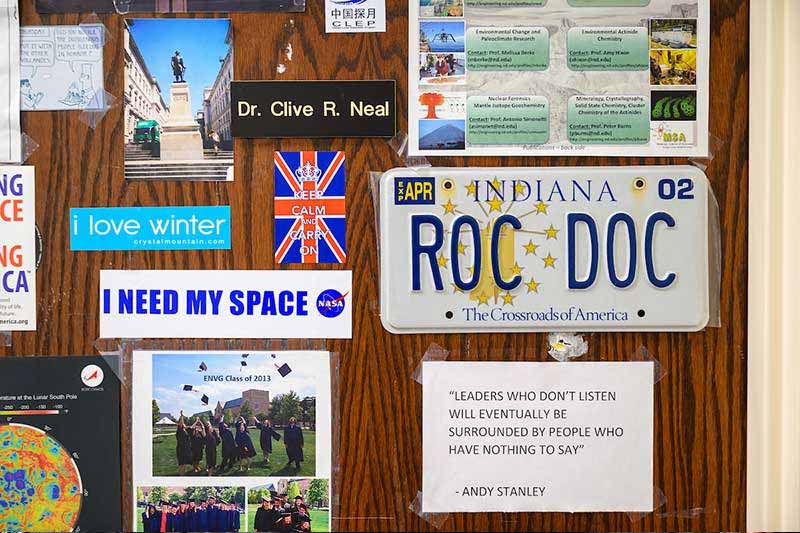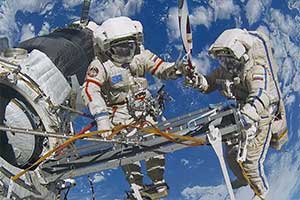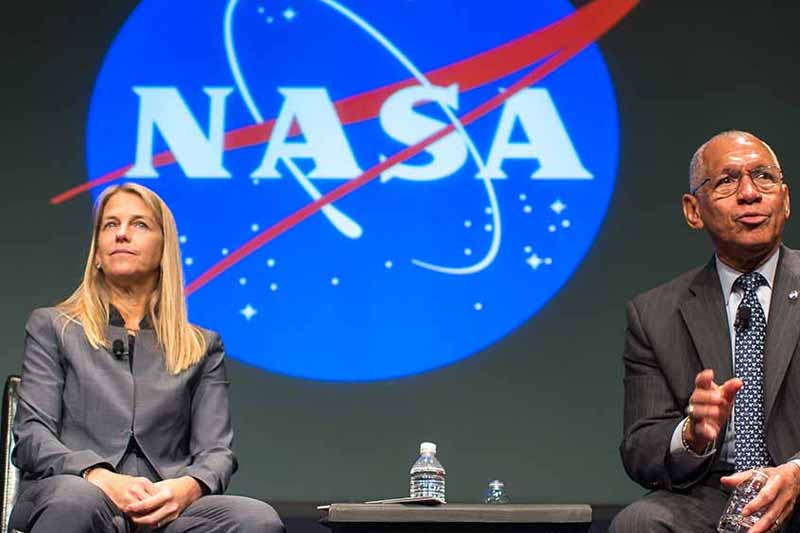“America’s challenge of today has forged man’s destiny of tomorrow. As we leave the Moon … we leave as we came, and, God willing, we shall return, with peace and hope for all mankind.”Astronaut Gene Cernan, December 14, 1972 — the last words spoken on the Moon
When Gene Cernan and Harrison “Jack” Schmitt climbed into their lunar module nearly 50 years ago at the end of the Apollo 17 mission, it marked the end of an era. The Apollo 17 crew would splash down in the Pacific Ocean a few days later, marking the end of humanity’s presence on the Moon for the foreseeable future. A new age of space exploration was ushered in with the launch of the first space shuttle in 1981. The shuttle program had its own set of triumphs, notably the launch and subsequent repairs of the Hubble Space Telescope. But the pursuit of so-called deep space exploration via crewed missions — including a return to the Moon — did not seem imminent, replaced instead with a series of missions involving uncrewed probes in deep space and crewed missions closer to Earth.
The idea of returning humankind to the Moon dawned again in 2017 with the official unveiling of NASA’s Artemis program. In mythology, Artemis is the twin sister of Apollo. As the program’s namesake implies, a chief goal of Artemis is to see humans once again on the surface of the Moon, including the first woman and first person of color. NASA believes Artemis is a monumental shift in deep space exploration that, along with subsequent missions, will culminate with an achievement well beyond the lunar surface: landing humans on the surface of Mars.
But first, the Moon, and to get back there, NASA is developing an ambitious series of components designed to expand exploration of the lunar surface. It’s called the Gateway, and a Notre Dame alumnus is helping to get the lunar outpost — literally — off the ground.
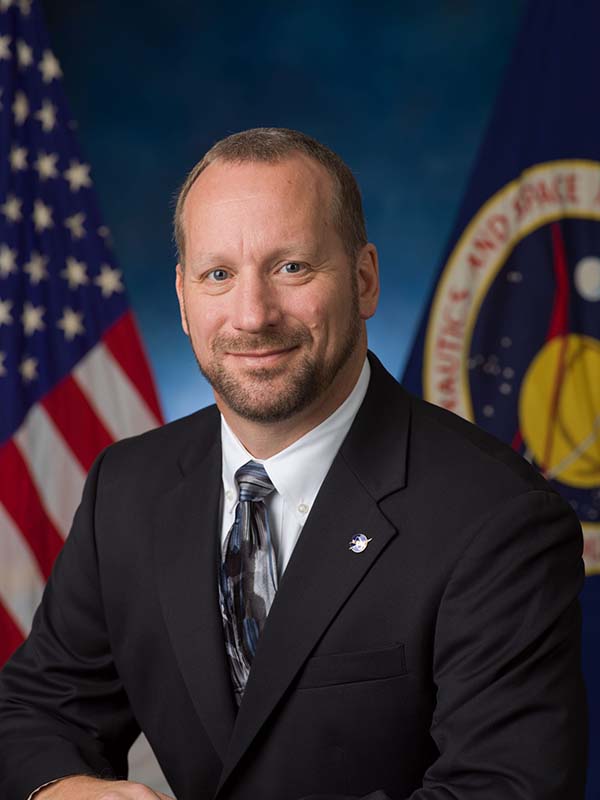
“Gateway is the cornerstone for the sustained exploration of cis-lunar space, including access to the lunar surface,” said Dr. Jon Olansen ’87, M.S. ’89, production manager of the HALO Project portion of the Gateway. “It establishes a permanent presence where you can have crew members using that station as a home away from home to set up both research and development activities. It enables crews of astronauts to be able to stay on the lunar surface for extended periods of time, or even have multiple sorties (missions) down to the lunar surface.”
Olansen’s team is working to create the initial components of the Gateway. The first habitable module is called the Habitation and Logistics Outpost (HALO). The HALO module provides the backbone for command and control and power distribution across the Gateway outpost, as well as other core functions including crew living and working space, science investigations and communications with lunar surface expeditions. Outfitted with three docking ports, HALO brings together the human lander, logistics vehicle, refueling system, and a port for expansion with the European International Habitat. The team is also working to integrate the HALO module with the Power and Propulsion Element (PPE), developed through NASA’s Glenn Research Center, that will provide all vehicle power generation and dynamic control.
Together, the HALO and PPE will be the first Gateway components launched into space, carried aboard a SpaceX Falcon Heavy rocket. It’s one example of a robust set of collaborations NASA has formed to complete the project. The Canadian Space Agency, European Space Agency and Japan Aerospace Exploration Agency form the international alliance working with private corporations including Northrop Grumman, Maxar Technologies and others to build out the full Gateway outpost. HALO will integrate critical components from each of these International Partners and will launch deep space weather experiments. When it’s completed, it will feature laboratory space, a logistics and cargo resupply hub, refueling systems and the capability to dock a lunar lander. The HALO and PPE also offer a robust set of communications assets, enabling crew members and spacecraft on the Moon to talk back to controllers on the ground and return high definition video back to earth from the surface. The HALO and PPE modules will be integrated by Olansen’s team here on Earth and are scheduled to launch on a SpaceX Falcon Heavy in late 2024. The combined stack will spend up to a year in transit to lunar orbit using a Solar Electric Propulsion (SEP) system on the PPE.
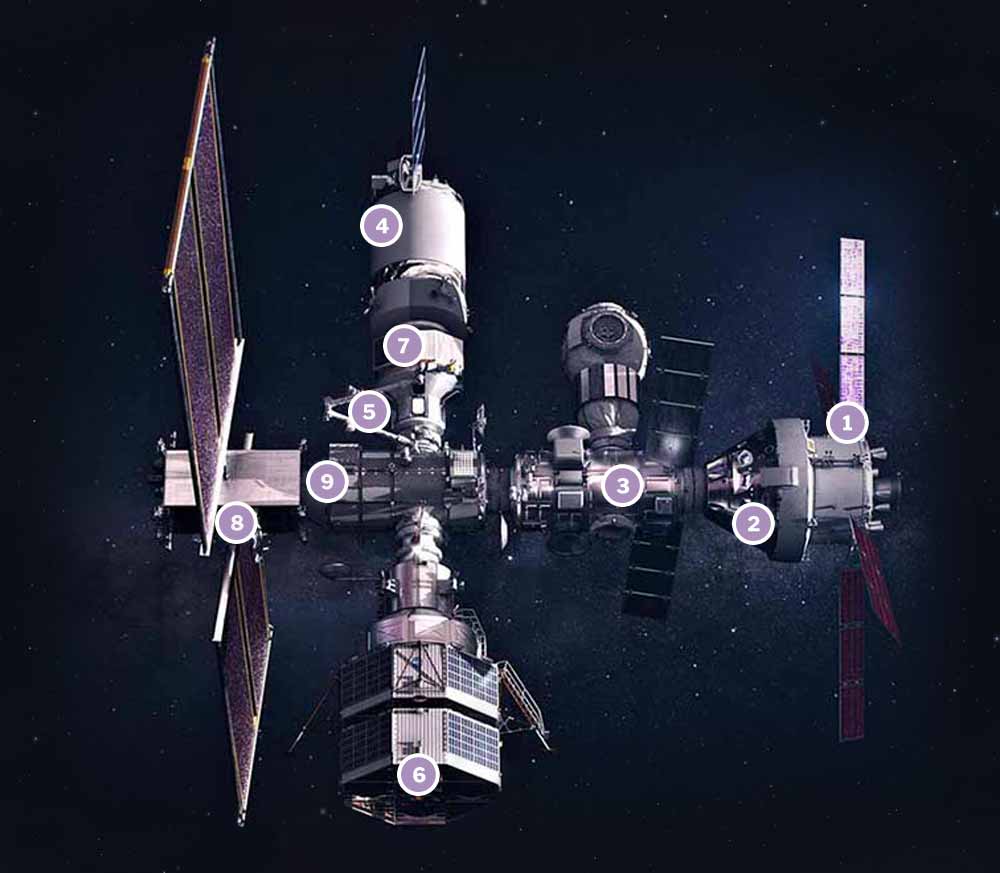
An internationally developed installation orbiting a planetary body will no doubt draw comparisons to the International Space Station, but Olansen notes there are key differences.
“The International Space Station has been a wonder for humankind,” he said. “The amount of research we’ve been able to do, the ability for multiple nations to be involved in that engineering feat and then the science we get out of it, it’s been fabulous. But it operates in low-Earth orbit. It’s a couple hundred miles from the Earth’s surface.
“All space flight is hard. It takes a lot of effort, and there’s risk associated with it. But we’re able to get to and from the International Space Station routinely. When you talk about Gateway, out in cis-lunar space, it takes much more energy to be able to get crew and cargo out there.”
For perspective, the International Space Station orbits about 254 miles above the Earth — roughly the distance from Manhattan, New York, to Portsmouth, New Hampshire, where Olansen lived before attending Notre Dame. (His father was stationed at Pease Air Force Base.) Gateway will make its orbit around the Moon, some 238,000 miles away. Planning for the effort it will take for repeated missions at this considerable distance is at the heart of NASA’s calculations for how Gateway will be used. It will spend much of the year uncrewed, and Olansen’s team is working through how it will nonetheless remain operational during that time for ongoing scientific experiments. Once it’s established, however, it will give NASA and its international partners the ability to store cargo and supplies near their mission destination. Gateway will act as a waypoint, ultimately resulting in less fuel needed aboard each spacecraft making the journey and thus less overall energy required to conduct multiple missions to the Moon’s surface.
“It gets back to the fundamental purpose of having Gateway in the first place,” Olansen said. “That is the rationale for having the station: It enables that sustained exploration and the ability to bring all of the fundamental aspects of space exploration — equipment, mobility units, all of those pieces — and have them there for future use.”
“We are the lucky ones, to be able to do what we do.” –Jon Olansen ’87 M.S. '89
Conceptual rendering of Orion docking with Gateway.
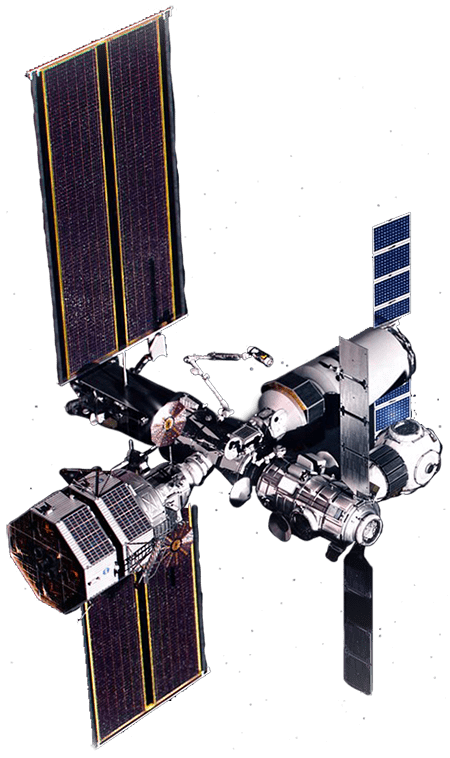
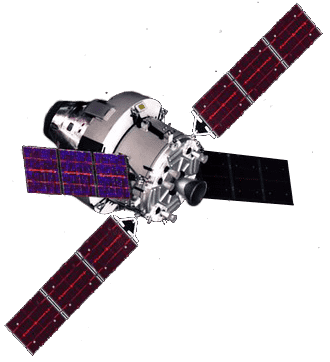
As a result, the time spent on the lunar surface conducting experiments and gathering samples can be greatly expanded. Cernan and Schmitt spent three days on the surface as part of Apollo 17; Olansen said future lunar missions using Gateway could last up to a couple of months, with astronauts potentially making multiple trips from Gateway to the lunar surface. It’s a model that could be employed for exploration deeper into space as well, Olansen said.
Gateway comes at a bit of an inflection point in popular culture as well. Series such as “For All Mankind” (2019) and “The Right Stuff” (2020), and feature films including “First Man” (2018) have combined with well-publicized, real-world discoveries to seemingly rekindle the public’s imagination as it relates to space exploration. Olansen has sensed this growing interest as well.
“In this day of social media and continuous news cycles, there seems to be a very frequent and engaging source of space-related information,” he said. “It seems in our country, there is also increased awareness of the benefits of space exploration, whether they be scientific discoveries or the technological advances that we make in the course of executing those missions that can then be used to advance our everyday life here on Earth. I give a lot of talks to a lot of different schools, or at conferences, and you do get the sense there is an uptick in the interest and an understanding of the benefits of space exploration.
“To keep perspective, I frequently remind my team that we are the lucky ones, to be able to do what we do,” Olansen said.
“I run projects and run teams and Notre Dame reinforced some of the values that I brought to the culture of those teams.”
Olansen’s own interest in space exploration traces back to high school. When it came time to choose a college, he was drawn to Notre Dame’s distinction as having one of the few aerospace engineering programs at the time. So much so that the University was the only school to which he applied. He didn’t visit campus until he arrived about a week before classes started as a new AFROTC cadet. He credits his time here with cultivating the ability to take on a role with a project like Gateway, which would have seemed much more like pop-culture fantasy than vocational reality when he was in school. He said one key takeaway from his Notre Dame experience was learning how to think through problems, a skill he employed early in his career as a flight controller for the space shuttle in NASA’s Mission Control Center, and honed leading other NASA flight system developments such as the Morpheus Lander and the Orion boilerplate crew module for the Ascent Abort 2 (AA-2) flight test, including serving as Director for that launch.
“The other takeaway is the importance of values,” Olansen said. “This piece showed up more and more over time as I assumed more senior roles at NASA. I’ve been privileged to manage projects and lead teams, and Notre Dame helped shape and reinforce the values that I brought to the culture of those teams. Everything from integrity to perseverance to respect — these might sound like soft skills, but to run a team — really pull a team together and lead that team — in my mind requires some of those foundational values that I developed at Notre Dame.
“There are several of us Domers here at NASA-JSC (Johnson Space Center) that I’ve been fortunate enough to work with through the years. We still get together for happy hours, whether it’s a high-level program manager or someone who’s fresh out a year or two. The community and camaraderie that’s there as a result of being a Notre Dame alum is something we all cherish.”
